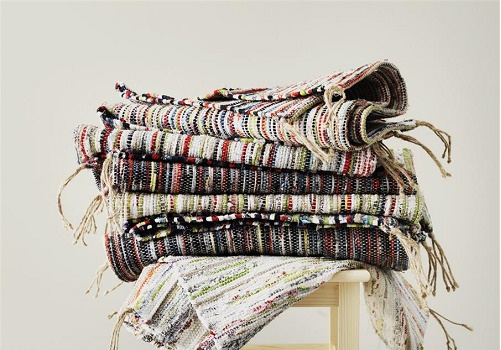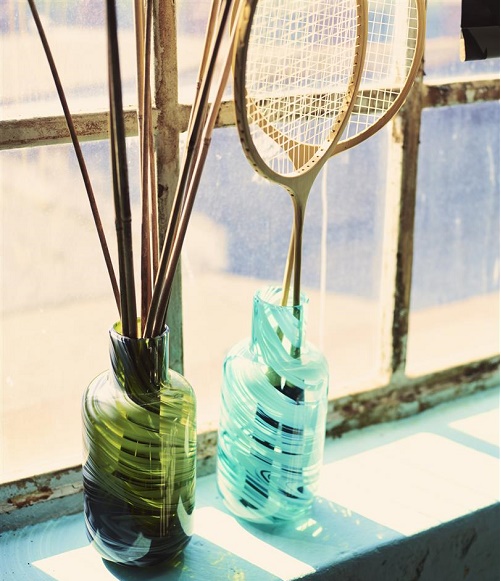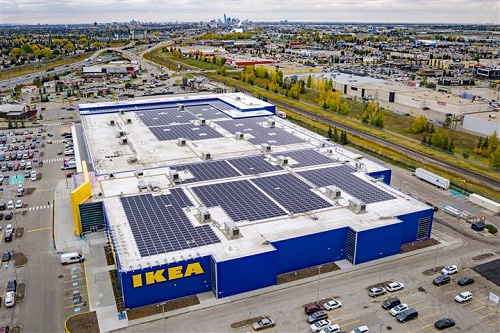Believing that the ‘circular’ economy is vital to the future of business in Canada, a number of business leaders, academics and non-governmental organizations recently launched a new organization called the Circular Economy Leadership Coalition (CELC). The hope is to work together to help advance Canada’s transition to a circular economy. By consulting with decision-makers in government and business, the group ultimately wants to ensure that investing in an innovative circular economy is a more valuable choice than the current less-sustainable path.
SEE Change recently sat down with Brendan Seale, sustainability manager at IKEA Canada, one of the members of CELC, to discuss the new model, why he feels it’s necessary, what IKEA is doing to promote the circulate economy and how these steps can impact business moving forward.
Tell us about CELC, its members and why it was founded
CELC is borne out of a recognition that a circular economy will not emerge solely from actions of independent actors. To capture the financial, social, and environmental benefits for the Canadian economy, new partnerships and forms of collaboration will be required within and across business, government, academia, and civil society. The founding organizations (IKEA Canada, Unilever Canada, Walmart Canada, Loblaws, National Zero Waste Council, The Natural Step, International Institute for Sustainable Development, Institute de l’environnement, du développement durable et de l’économie circulaire [EDDEC]) together are committed to putting Canada in a position of global leadership, supporting a national strategy, and enhancing collaboration and policy-making for a circular economy.
The concept of a “circular” economy is not actually new but its adoption into business practices today is. What inspired IKEA to adopt the model?
IKEA is committed to having a positive impact on people and the planet through our business. A shift to a circular business model will enable IKEA to grow our business financially while reducing our need for virgin raw materials and reducing waste. Global trends of increasing population, growth of the middle class, resource constraints, and climate change together will bring a very different business operating environment, and we are working to prepare our business to be successful in a future with those conditions.
How will the model be adopted at IKEA? What can consumers expect and when?
IKEA has begun designing products with circularity in mind, sourcing more and more recycled content, and creating products that are more easily recycled, repurposed, etc. IKEA Canada has partnered with Kijiji to support our customers to prolong the life of IKEA products, and to offer them new products like lamp shades and sofa slip covers that can extend the life of used products. IKEA Canada will also participate directly in the second-hand sales market, promoting recovered and salvaged products from our business that could otherwise be sold in our As-Is departments.
For many years, IKEA Canada has offered a free-take back service for household batteries and light bulbs, as well as a mattress removal and recycling service for a small fee when a new mattress is delivered to a customer’s home. We will continue to explore and develop services and advice that will prolong the life of products in our customers’ homes, and offer new solutions for customers who are ready to part with certain IKEA products.
What do you anticipate the benefits to be – socially, environmentally and even to the bottom line?
A more circular business model will create more opportunities to interact with existing IKEA customers throughout a product’s lifespan, and also to connect with many new consumers. We aspire to create more brand loyalty, more visitation to IKEA stores, and to convert more Canadians into IKEA customers by being relevant to them in new ways. By extending the useful life of IKEA products, we will prevent them from becoming waste and support other members of our community to enjoy them.
What would you say to those concerned that the benefits of a “circular” economy will be outweighed by the challenges of pursuing it in a financially sustainable way?
A circular economy will create more economic activity over the long-term than our existing linear model. There are additional transactions through a circular model that prioritizes care, repair, refurbishment, re-selling, recovering, recycling, and re-producing. This approach clearly supports our vision to create a better everyday life for the many people. IKEA is a privately held company that is able to take a long-term perspective of our business, and we plan to grow our business as we reduce our need for virgin raw materials and prevent waste.
What needs to happen, in your opinion, for greater impact to be possible?
Canadian companies, governments, civil society organizations, and citizens need to better understand the economic, social, and environmental benefits associated with a circular economy and the potential costs and risks of inaction. Individual organizations can take beneficial actions alone, but a national strategy and policy framework are required to stimulate widespread actions for Canada to capture the benefits.
What is your hope for the next decade and what role do you believe IKEA will play in that vision?
I hope that Canada can assume a position of leadership in working towards a circular economy. IKEA Canada will support our customers to prolong the life of their IKEA products, and hope that this will create a shift toward a more sustainable, resource efficient lifestyles. This will support our vision to create a better everyday life for the many people, and the pursuit of the ambitious goals in our People + Planet Positive strategy. We also will strive to collaborate with others, to learn and share what we have learned, and to advocate for policy changes that will accelerate progress.
Brendan Seale is the sustainability manager of IKEA Canada.




